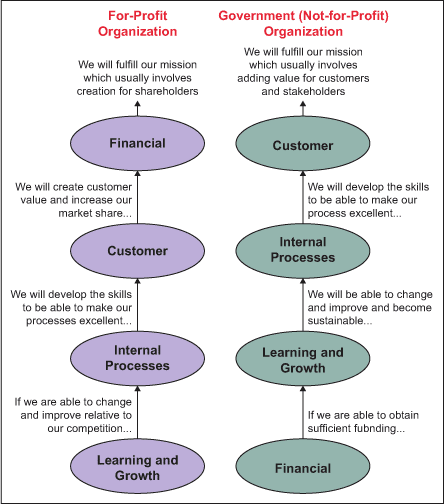
Six Sigma, with its emphasis in many cases on hard, current-year results, is often not associated with government agencies and their processes. One reason is that a government’s mission is as much about providing services to the public and other stakeholders as it is about cutting costs and realizing efficiencies. In fact, there is frequently tension between these two aims.
On one hand, government agencies want to provide comprehensive services. On the other, they want to be seen as lean and efficient, using tax payers’ money wisely. Likewise, the public and other stakeholders want – and indeed demand – effective services from government agencies; however, tax increases are always unpopular, even when they are used to expand service levels. Therefore, Six Sigma professionals working in government agencies must shift their focus from financial savings, the primary goal of projects in the business world, and make added value for customers their first priority.
Government Impact on Business
Government agencies, by their very nature, exist to administer regulations. These regulations potentially affect the behavior of the private sector – the customers. In some cases and often for good reasons, companies must comply with acts and regulations that add to their operating costs.
The following example from a government agency illustrates this type of regulation. In Australia, heavy vehicle transport companies are required by law to gain permits for their vehicles to travel along routes not designated in a published “gazette.” The reason: Certain roads, bridges or structures along a route may present a level of risk.
Reducing Red Tape
Government agencies must make efforts to avoid over-regulation. Likewise, agencies need to ensure that their administration of required regulations is as efficient as possible. In this way, affected private sector entities can operate with both a minimum number of regulations and with efficiently administered regulations, lowering their compliance costs. The efforts of a government to reduce and improve regulations are often referred to as red tape reduction.
Improvement efforts, such as Six Sigma projects, completed by government agencies therefore can carry a double impact. The process within the government agency is made more efficient. And in so doing, the agency is helping drive down the costs of its important customers – a win-win situation.
This type of red tape reduction can be illustrated using the heavy vehicle permits example. The government agency, after extensive consultation with transport companies, pledged several efficiencies. Two of these involved permits. First, the gazetted network was examined in order to include more routes. This reduced the number of permits required in the first place. Second, the process for receiving, approving and issuing permits was examined and made leaner. In this case, a DMAIC (Define, Measure, Analyze, Improve, Control) analysis revealed that the turnaround time could be reduced significantly by implementing the preferred solution – online permits. Because the reduction in turnaround time equates directly to customer waiting time, this saving translated directly to the transport companies’ bottom line.
Moreover, the savings at both ends was quantified. Internally, the saving manifested itself as a leaner, shorter process; staff members were able to spend more time on value-added work. Externally, the savings resulted in reduced waiting time for permits, enabling improved achievement of delivery deadlines.
Balanced Scorecard and Shifting Priorities
Looking at this red tape reduction in terms of the Balanced Scorecard shows an opportunity to refocus the scorecard for government environments. When Robert Kaplan and David Norton first proposed the scorecard with its four perspectives –, Financial, Customer, Internal Business Processes, and Learning and Growth – they were primarily looking through the lens of a profit-making entity. The left side of the figure below illustrates a possible cause-and-effect relationship between the perspectives in a for-profit organization. Note that Financial reigns supreme – although Kaplan and Norton demonstrated the importance of all perspectives, Financial still represents the final “end” – because a company’s overriding responsibility is to its shareholders. Hence, improvement efforts ultimately center on improving the bottom line of the organization.

Paul Niven, in his book Balanced Scorecard Step by Step for Government and Nonprofit Agencies(Wiley, 2003), proposed a different cause-and-effect relationship for government and nonprofits. Profit (Financial) is no longer the prime motive. Rather, the entity exists “to serve” and Customer is elevated to top billing. The right hand side of the figure above illustrates this concept.
This model explains the government agency’s interest in reducing red tape. Unlike the profit-maker, the government agency is foremost concerned with its customers, existing to serve their interests. If this involves financial benefit, so much the better.
Opportunities for Six Sigma
Far from being unable to plan and implement improvement methodologies, government agencies have a unique opportunity to benefit from doing so. While it is true that improvement efforts can be frustrated by changes in administration and that processes are subject to change, there are still many opportunities for those with an eye for improving customer relations. If good data is available, Six Sigma may be useful. If not, Lean or other continuous process improvement techniques may be more appropriate. Either way, the reward is compelling – savings not only for the agency, but also for the agency’s customers.